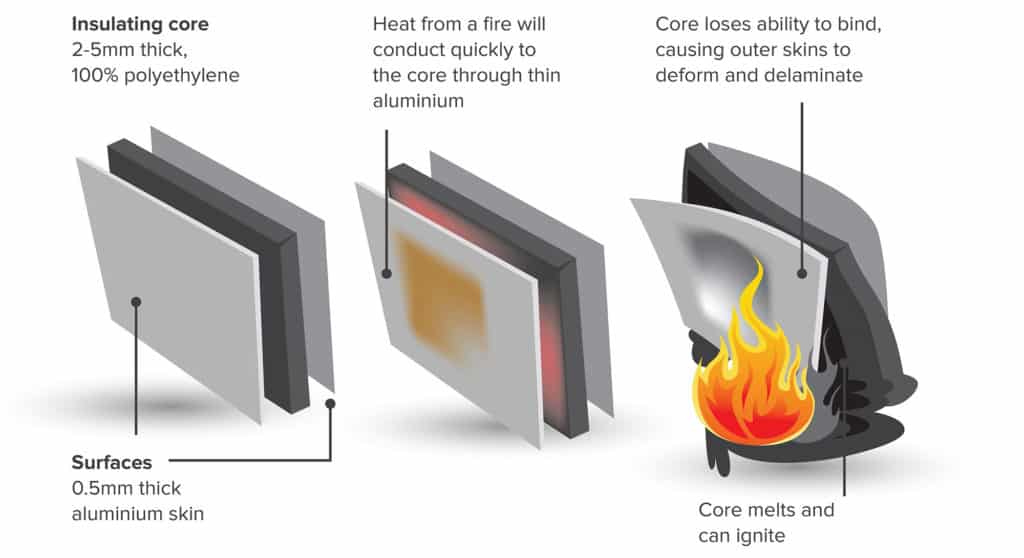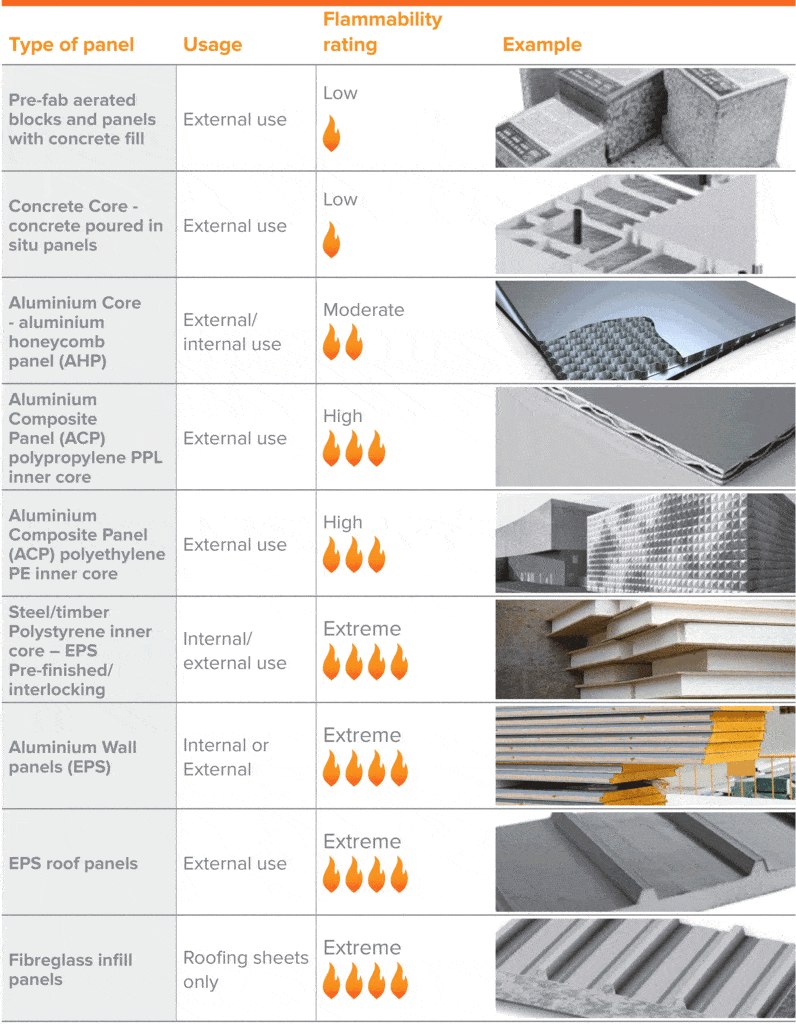Demystifying Cladding!
What is cladding?
From early in the 1990’s, aluminium composite panel (ACP) became a standard material for medium and high-rise buildings across Australia, revolutionising the building sector by providing a low-cost, aesthetically pleasing skin or layer that was easy to attach to a building’s framework.
Cladding is technically any layer of material applied over another to provide a skin or layer, however in the construction context refers to material used to cover all or part of a building’s exterior that in itself is not structural or part of the frame.
For high rise construction, the National Construction Code (NCC) forbids the use of any external cladding which does not prohibit the spread of fire. The NCC requires compliance with Australian Standards for testing of construction materials, and the current standard aligned to the spread of fire and external cladding is AS 1530.1−2024 while for low rise these standards differ and other standards may apply such as AS 1530.3-1999.
In recent times, highly-flammable Aluminium Composite Panel (ACP) cladding has led to major fire damage – as evidenced in cases of the Lacrosse building in Melbourne (2014) and the Torch Tower in Dubai (2017) – and even loss of life as in the Grenfell Tower fire in London (2017).
The use of cheaper imported ACP cladding with a PE core on high-rise buildings is at the heart of the current problem. While Australian suppliers were aware of the fire risks associated with this cladding, a demand by developers, builders, sub-contractors or suppliers for a cheaper product ensured their continued use, made easier because of Australia’s lax, ambiguous building standards.
As a consequence, there is demand for changes to the NCC that will tighten regulations on the use of external cladding in new or refurbished developments, issues currently under review by the Australian Government following a recent Report into aluminium composite cladding handed down by the Senate Economics References Committee1.
Across Australia, ACP is frequently used for decorative effect on building facades and signage. ACP is by its construction method a ‘sandwich panel’, and not all sandwich panels are considered hazardous.
Sandwich panel construction
Sandwich panels are used in construction where light-weight sheeting is required. Their use can be external or internal on walls, ceilings, roofs or for signage. Some panels are flexible and can be moulded to shape for architectural design features. Their benefits include an ability to stop wind and rain entering a building, sound and thermal insulation as well as varying levels of fire resistance.
The panels comprise external inside and outside skins with an inner core comprising of some form of insulating material.
The external surfaces composition can include:
– aerated concrete
– plasterboard
– steel
– aluminium
– board
– timber panelling
etc.
The inner core composition can include:
– concrete
– fibreglass
– polystyrene (EPS)
– polyethylene (PE)
– polypropylene (PPL)
– aluminium
etc.
Both the outer surfaces and inner core will respond differently to fire. Additionally, the finished product will also respond differently to the isolated materials. Finally, the method of installation can influence the material’s flammability.
Example:
Aluminium composite panel flammable core

Flammability rating for various materials
The following simplified chart covers some sandwich panel materials and their basic flammability rating.

Please note: the above table is indicative only, and more detailed information can be found at:
1. http://www.csiro.au/en/Do-business/Services/Materials-infrastructure/Fire-pass-scheme/Certificates-of-Assesement;
2. http://www.abcb.gov.au; or
3. https://certmark.org/
Implications for insurance
There should be no impact to achieving insurance cover where cladding products have passed AS1530.1-2024; the Australian Standard for flammability of external building products. Where this standard has not been met, given the nature of highly flammable cladding, it may be difficult to access full insurance cover within the Australian strata insurance market.
Our position at Strata Community Insurance is that we will quote on a case-by-case basis with cover for certified and compliant strata complexes.
Taking action
Strata Managers can support their executive committees by providing information on some simple steps to identify the type of cladding used on their buildings and determine if they need to undertake rectification/remediation to remove/replace the cladding, including (but not limited to):
- Reviewing all the design, construction and approval documents for the building including original architectural plans to determine whether external wall cladding has been installed on the building.
Documents should include a copy of the original architectural plans on file showing the composite of material used and whether it passed AS1530.1-2024 (the Australian Standard for determining combustibility of building material) and the Certificate of Conformity that was issued at the time of construction.
If it is confirmed that cladding has been installed, they should seek advice about the suitability of the type of material used and the method of installation. - Engaging suitable professionals to review and inspect the overall fire safety of the building (such as an engineer and/or fire safety expert), including the installation of any external wall cladding. These experts will be able to provide an assessment of any steps required to maintain or improve the building fire safety.
- Introducing a drenching system. This type of system may help slow down a fire and assist in the building being ‘Deemed to Satisfy’ under the National Construction Code (owners corporations should seek professional assistance with this solution).
- Ensuring that their insurer is aware of both the existence of any cladding and its conforming (or non-conforming) status. A failure to disclose such information to their insurer may result in there being no cover under their insurance policy.
- Agreeing on a course of action and the potential ability to identify who is responsible and their ability to cover rectification costs.
- Putting a plan in place to remove/rectify any non-conforming ACP cladding immediately.
- Seeking legal advice to recover costs of repair/replacement/rectification.
Please note the information in this article is general in nature and does not take into account your objectives, financial situation or needs. You should consider obtaining independent advice before making any decisions based on this article.
1 Senate Economic References Committee: Non-conforming building products – Interim report: aluminium composite cladding, September 2017.
This page’s content was last updated on 15 Aug 2024.
Download Resources
Download the “Demystifying Cladding” PDF below.
Stay ahead with our strata insurance updates!

1. Ensure the site is safe
